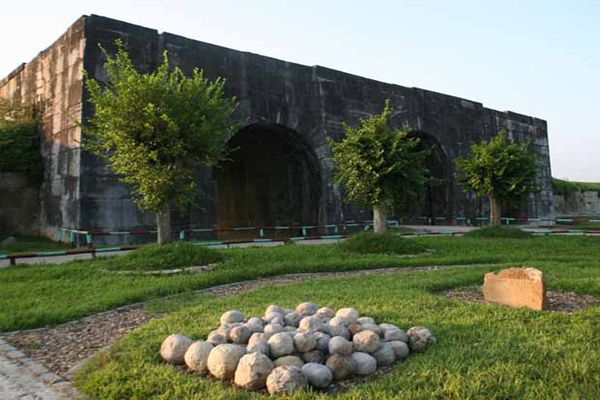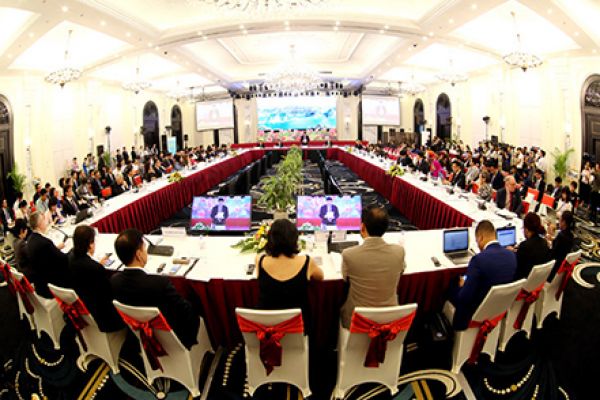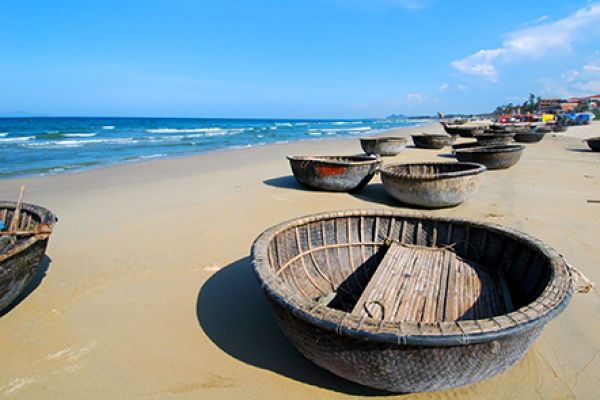
 On March 26, 2011 (the 22nd day of the second lunar month of 2011), the Hanoi People's Committee and the People's Committee of Hoan Kiem District will organize a ceremony to announce the completion of a project to restore and enhance the cultural value of the Kim Ngan Communal House and announce the 2011 Jeweler Festival at 42-44 Hang Bac Street.
On March 26, 2011 (the 22nd day of the second lunar month of 2011), the Hanoi People's Committee and the People's Committee of Hoan Kiem District will organize a ceremony to announce the completion of a project to restore and enhance the cultural value of the Kim Ngan Communal House and announce the 2011 Jeweler Festival at 42-44 Hang Bac Street.
The Kim Ngan Communal House is located at 42 Hang Bac Street. This old architectural and religious structure was built in the post-Le Dynasty period. During the time of King Gia Long, residents from Chau Khe Village (now in Hai Duong Province) came to the imperial capital of Thang Long (modern-day Hanoi) and bought land to expand the communal house. The Kim Ngan Communal House covers an area of 575sq.m, wider than many other architectural works in Hanoi's Old Quarter. It has a triumphal arch and a courtyard. The main part and the rear part of the communal house, each consists of three rooms with worshipping ground and partitions between the compartments. The rear part and the front part of the communal house are linked to each other by the double-roof architecture with the upper roof linked with the front part and the lower roof creating open space between the two parts.
Chau Khe villagers came to reside in Hang Bac Street and expanded the Kim Ngan Communal House (also known as Duoi Communal House) to worship the father of the jewelry making craft but not the man who had offered them a special privilege that allowed them to develop this craft. That man was Luu Xuan Tin who was the prime minister under Le Thanh Tong Dynasty. Allowed by the king to build a foundry to make silver ingots for the court, Luu Xuan Tin took Chau Khe villagers to Thang Long and opened a jewelry school at 58 Hang Bac Street. So, the cultural and historical values of the Kim Ngan Communal House are that it preserves the history of a traditional craft in Hanoi.
Since 1890, the communal house had been used mostly as a meeting and ceremonial place. During times of war, it was the place for teaching Vietnamese and nursing skills as well as military training. After 1954, the front part of the communal house became the shelter for many families. The worshipping area therefore was narrowed and the entire communal house was heavily damaged. In 2004-2005, the Management Board of Hanoi's Old Quarter coordinated with Vietnamese and French experts to undertake research to identify the cultural, architectural and religious values of the communal house and assess its actual condition to find ways to restore the original form of the communal house. In 2009, a project was initiated to restore and enhance the Kim Ngan Communal House with technical assistance of experts from Toulouse, France. In January 2011, this project was completed and the communal house was opened to serve people's religious needs and visitors. This will be a place for jewelers to share experiences as well as a place to hold folk art and cultural activities which contribute to bringing into play the tangible and intangible cultural values of Hanoi's Old Quarter.
Architects and historical researchers share the opinion that although it has not been classified as a historical relic, Kim Ngan Communal House is a valuable architectural and religious structure. The restoration of the Kim Ngan Communal House and the 2011 Jeweler Festival will honor tangible and intangible cultural values of Hanoi's Old Quarter, contribute to popularizing the cultural and religious customs of Vietnamese people and improving their awareness of the need to conserve and bring into play the traditional cultural values of Hanoians.
Source: VEN










(84-63) 3 826042 – (84-63) 3 511142
No 54 Nguyen Dinh Chieu, Ham Tien Central Mui Ne Beach Binh Thuan Vietnam
523 To Hien Thanh District 10 Ho Chi Minh City Vietnam
Ha Long Halong City Quang Ninh Vietnam
A13 Hung Thong 2 Halong City Quang Ninh Vietnam




